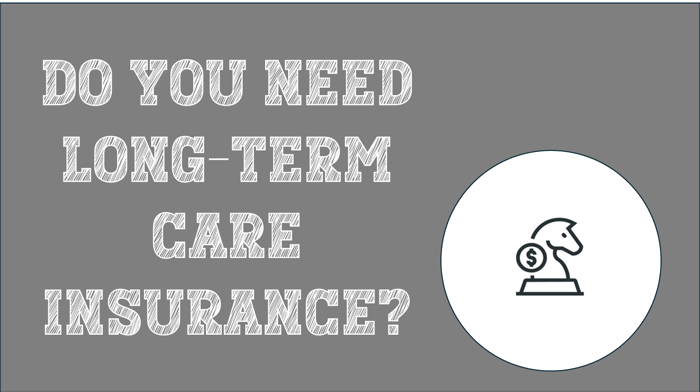LONG-TERM CARE & RETIREMENT
For most people, retirement is a major lifestyle change. The average retiree possesses a lot more freedom and time than the average worker. However, as with many other lifestyle changes, the shift to retirement brings new concerns and challenges. One concern of particular importance is long-term care.
Long-term care is an uncomfortable topic. No one wants to consider the prospect of being unable to take care of themselves. However, the simple truth is the probability of needing long-term care grows with age, and that means retirees must understand long-term care insurance.
The Risk
According to a study by leading scientist Peter Kemper, there is a 58% chance that the average male retiree (age 65 and older) will need long-term care at some point in his life. On the other hand, the average female retiree has a 79% chance of needing long-term care. Moreover, the average retired long-term care patient will remain in long-term care for roughly three years.
Although those percentages are high, that doesn’t mean that you should rush out and buy long-term care insurance. Purchasing long-term care insurance is a decision that should only be made after carefully considering your personal circumstances.
One of the factors to consider before purchasing long-term care insurance is that it’s exorbitantly expensive. Currently, for a couple who are both sixty years old, the lowest price would be $2,800 per year. That’s the absolute lowest price you would pay. More expensive plans cost upwards to $5,000 per year.
When Should You Purchase?
So, what are the most important considerations when in the market for long-term care insurance?
The first consideration is your age. The price of long-term care insurance can vary based on age. Most people who purchase long-term care insurance fall between the ages of 55 to age 65 years old. Buying a long-term care insurance policy after the age of 65 is seldom worth it, due to the massive increase in price.
Another factor to consider is your personal wealth. If you have a significant amount saved, you might be able to pay for your medical costs, thus negating the need for long-term care insurance. On the other hand, for individuals that require long-term care and are unable to pay for it, they are covered by Medicaid.
The sweet spot (as far as personal wealth is concerned) for purchasing long-term care insurance seems to be between $500,000 and $3,000,000.
If you have less than $500,000 in liquid assets, you run the risk of using up a great deal of your savings on insurance. On the other hand, those with more than $3,000,000 can usually afford the costs of long-term care.

What do I Need to Know?
If you’ve decided that you need long-term care insurance, you should consider what kind of insurance policy fits your needs.
There are two main types of long-term care insurance policies: Standalone and Hybrid.
A stand-alone policy is exactly what it sounds like. It’s a standard policy that insures you against the cost of long-term care.
Hybrid policies, on the other hand, combine long-term care insurance with either a life insurance policy or an annuity. The advantage here is that you get a bit more for your money. After all, the possibility of buying long-term care insurance and never using it still exists. By wrapping a policy in an annuity or a life insurance policy, you can “shore up your bases.” The disadvantage of choosing a hybrid policy is that the policy is less effective than the standalone versions of its component policies. Also, hybrid policies are far more expensive.
The terms to know when purchasing a long-term care policy are as follows: Premium, Elimination Period, Benefit Period, and Monthly Benefit.
- Premium: Long-term care insurance premiums are calculated based on your age, your health, the period you wish to be covered, your elimination period, and the maximum dollar amount you wish to be reimbursed.
- Elimination Period: This is similar to a deductible. If you have an elimination period of ninety days, then you must remain within a long-term care facility for a total of ninety days before your insurance will kick in.
- Benefit: There are two components in calculating your benefits. The benefit period measures how long you’re covered. The monthly benefit is how much your policy will cover each month. In practice, these funds can be moved around as needed. It’s helpful to think of it as a multiplication problem. If your benefit period is 4 years and your monthly benefit is $4,000, you are covered for a total of $192,000.
When purchasing Long-Term Care Insurance, you should also keep in mind that most policies offer several riders. The most important of these riders include the Shared Care rider and the COLA rider.
The Shared Care rider allows you and your spouse to share the funds you have access to through long-term care insurance as needed.
The COLA or Cost of Living Adjustment rider protects your insurance funds from inflation.

Not this kind of COLA.
Takeaways
You should carefully consider the advantages and disadvantages of long-term care insurance before deciding to purchase it. Your decision will likely have a significant impact on your future and should be considered carefully. For more information, I recommend speaking with a professional financial adviser.






